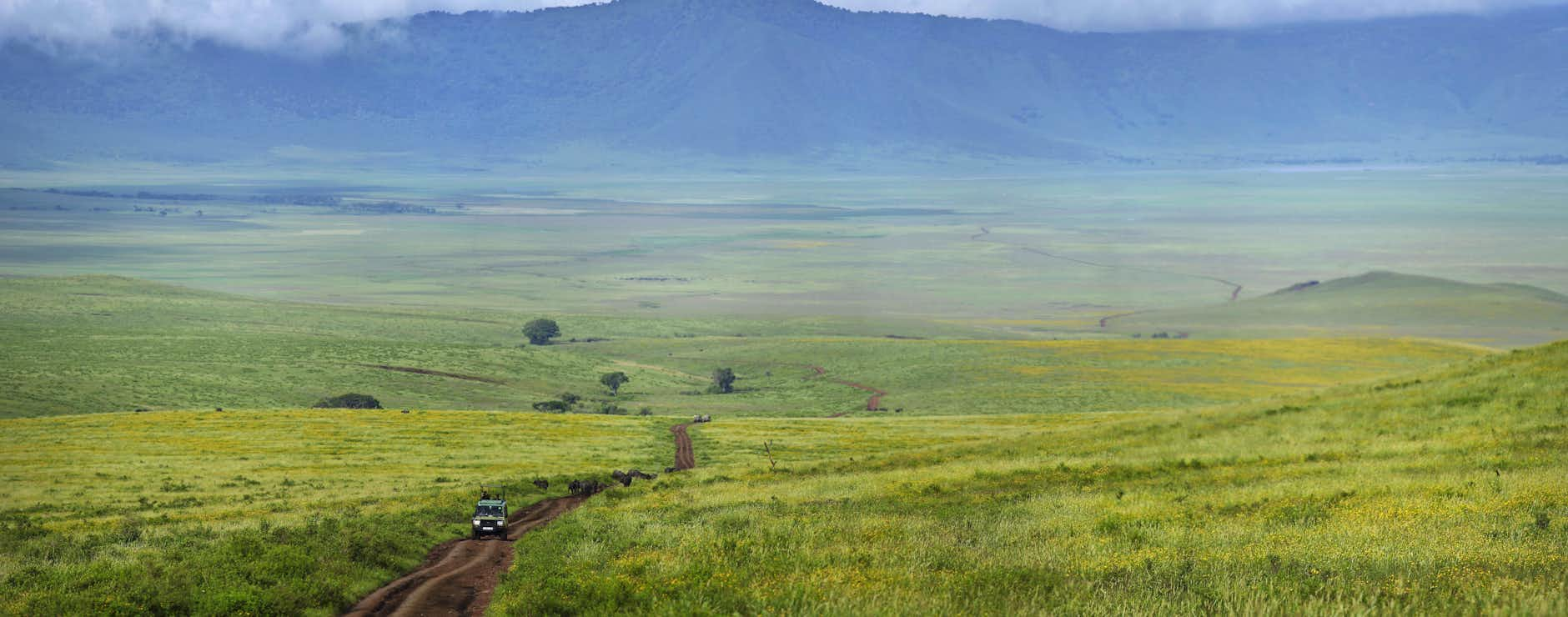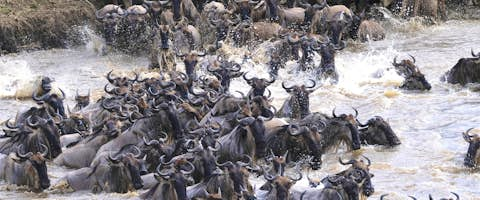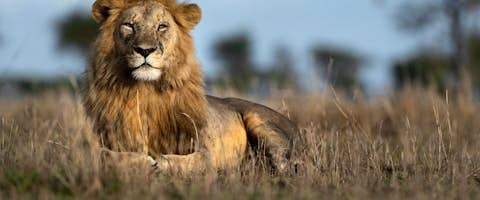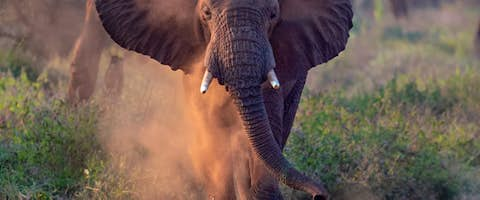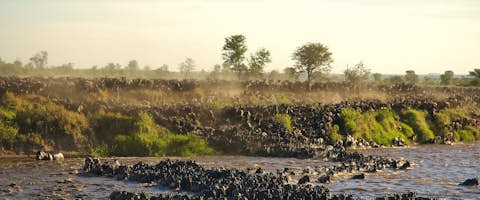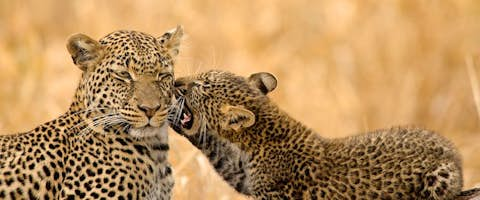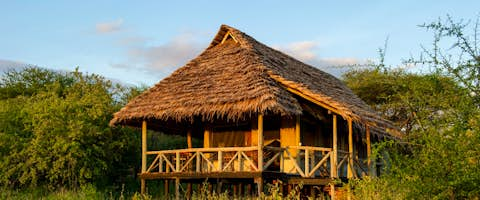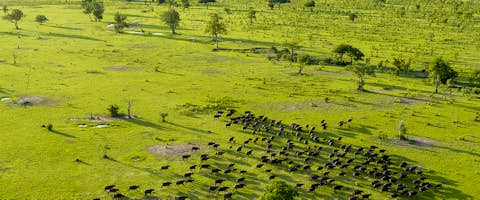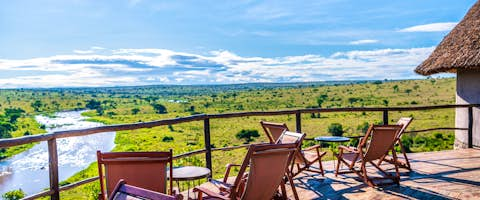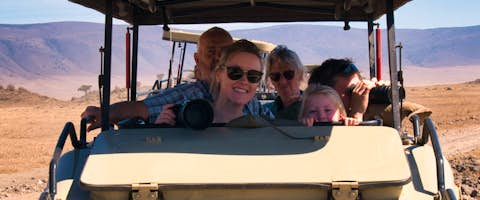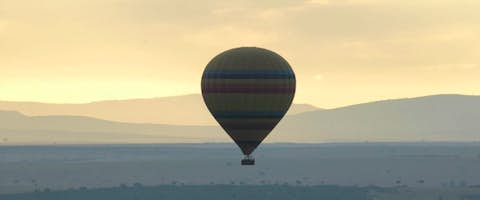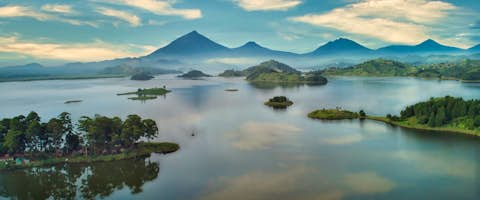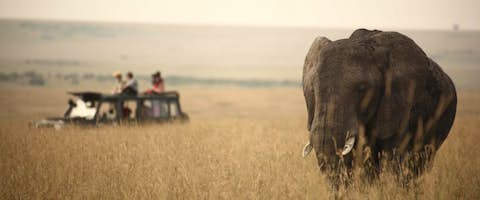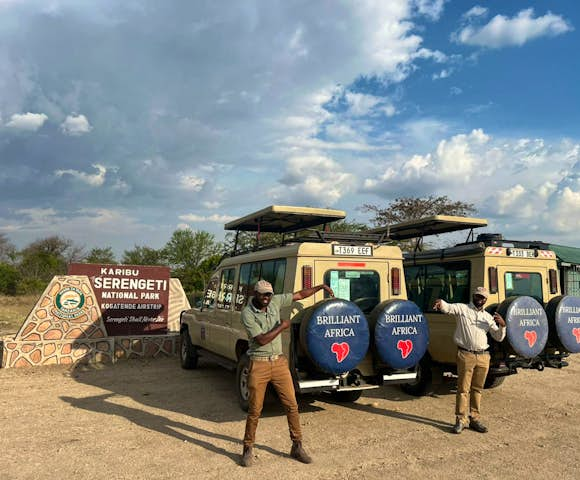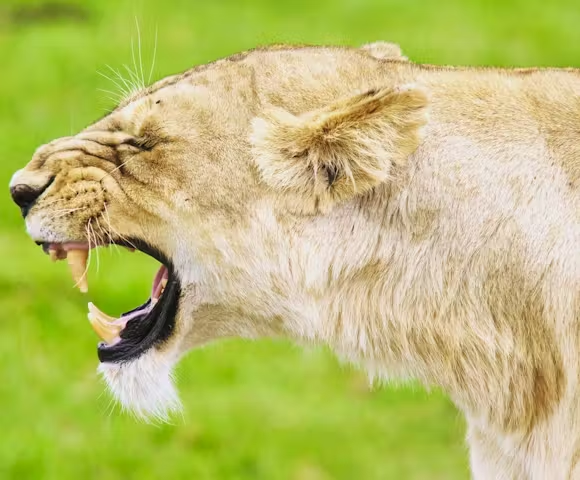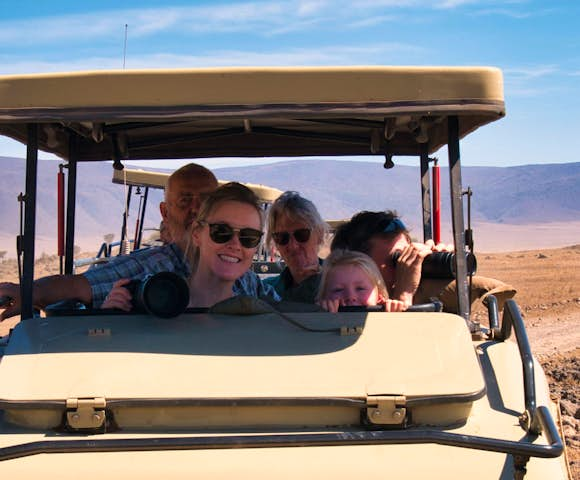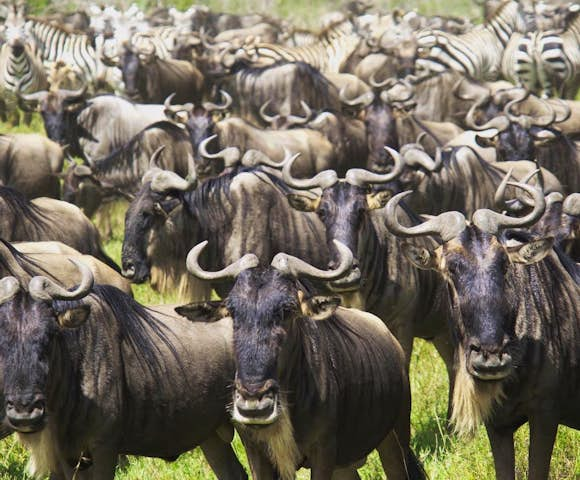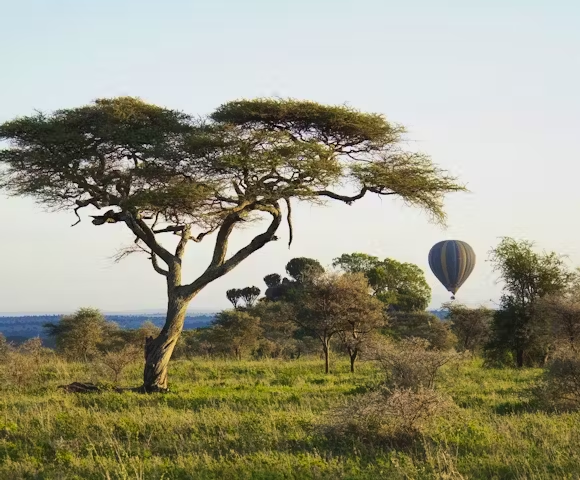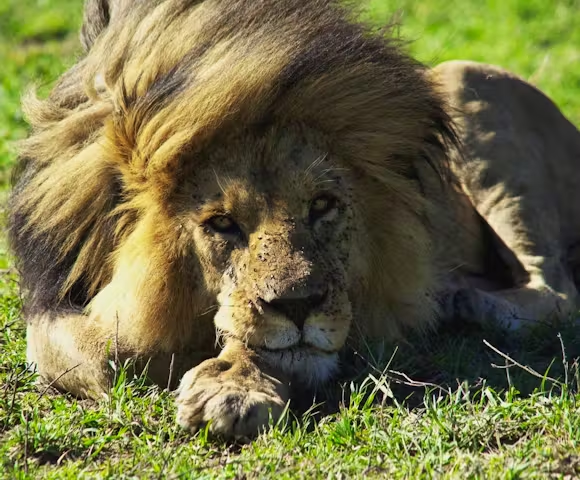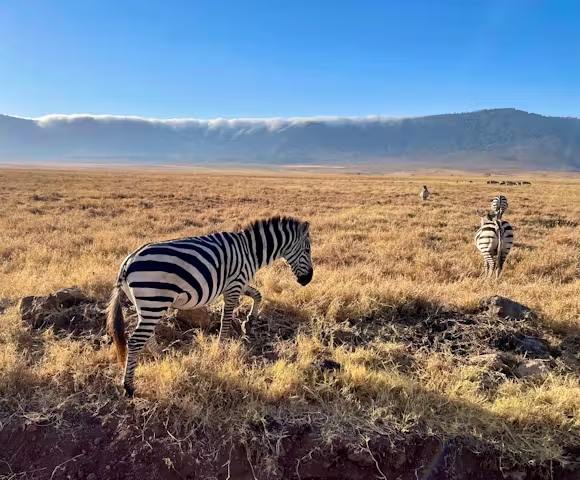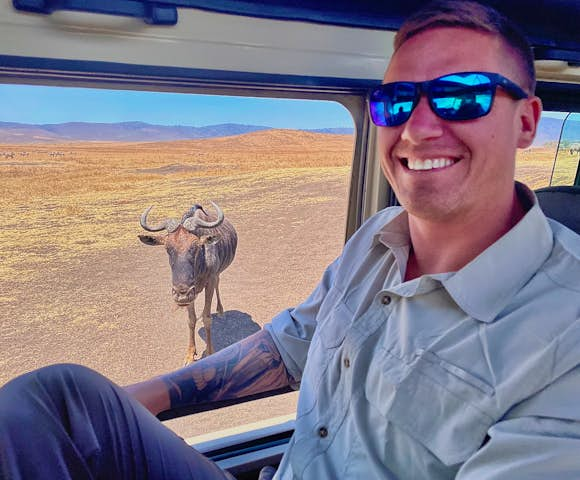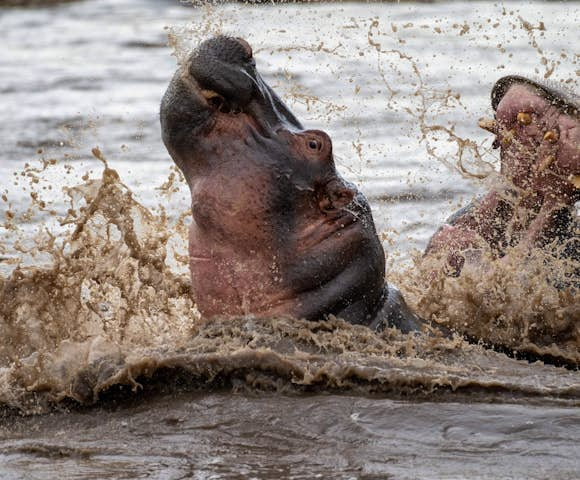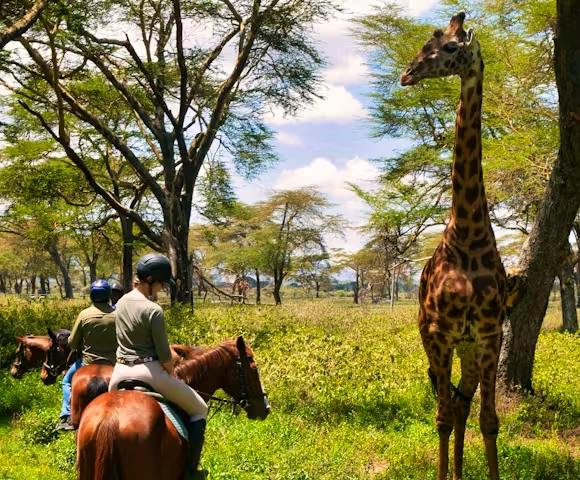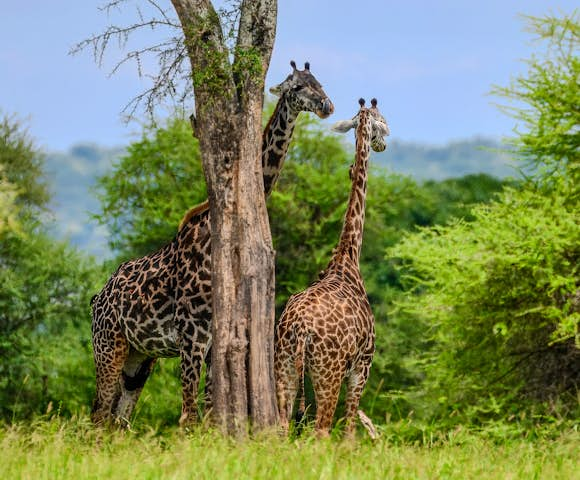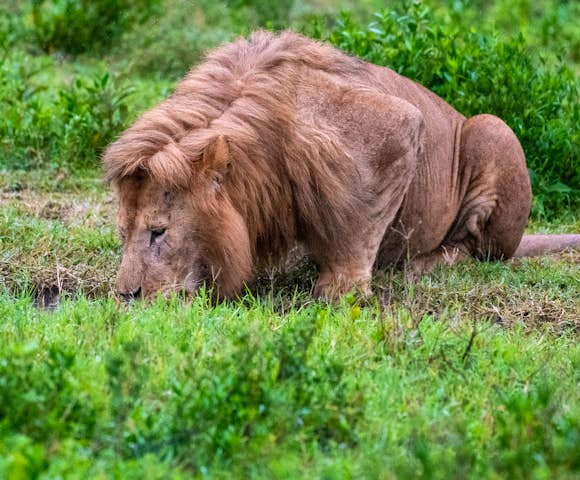Trips to Tanzania
The tours below showcase just some of what is possible. Use these itineraries as starting points, or to draw inspiration. Then get in touch, and let our expert team help craft the perfect itinerary for you.
Tanzania Seasonality, at a glance
The best season to visit Tanzania is during the long dry season, which falls from July to October. During this time, grasses are shorter which makes wildlife viewing easier. July to October also coincides with the Great Migration in the Serengeti.
From January to March, Tanzania experiences its short dry season and this is another spectacular time to visit. During this time, the wildebeest move south and its calving season in February with thousands of newborn beasts born every day attracting lots of big cats and other predators. Incredible safari at this time of year.
The rainiest months in Tanzania are April and May. However, much of the day can remain dry with short bursts of heavy downpours in the late afternoon and early morning. These rains can impact your safari activity, however many guides love this time of year as there are fewer other safari vehicles around and you'll be treated to beautiful, dramatic skies.
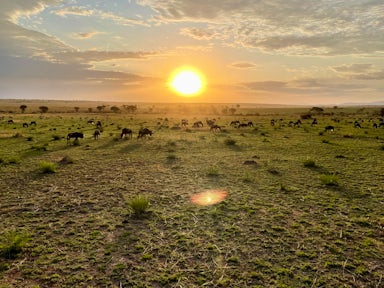
Wildebeest herds at sunset, Serengeti National Park
When is the best time to visit Tanzania?
-
Tanzania in January
January is fairly dry and hot, as the temperatures start rising after the short rains in November and December.
There is a chance of some short showers, but they usually occur at night.
It is the calving season on the Ndutu Plains, so visiting in January, especially towards the end of the month, is a great time to see wildebeest abound.
-
Tanzania in February
Temperatures continue rising, and the migration is still on the Ndutu Plains.
February is one of the optimal months for trekking Kilimanjaro, for safaris in the northern and southern parks, and for visiting Zanzibar for a beach holiday.
Like January, there is still a chance of short rains, but they also usually occur at night.
-
Tanzania in March
As the migration starts heading west towards the Grumeti River, the temperatures are still very hot.
The beginning of the month is still great for safari and beach trips. However, towards the end of the month, there is a higher chance of rain as Tanzania moves into the long rainy season.
-
Tanzania in April
In April, the long rainy season is in full swing. Travelling in this period is not advised, as torrential rains can affect planned excursions.
Many lodges are also closed.
-
Tanzania in May
Just like April, May is a month of rain, so conditions are not ideal for travel. The lush vegetation, while beautiful, makes wildlife spotting more difficult.
-
Tanzania in June
Towards the beginning of June, the long rainy season ends, and Tanzania is blanketed by verdant vegetation and is a great time for bird-watching.
By the end of the month, the savannah generally becomes drier and locating wildlife becomes easier. The migration begins heading north from Grumeti River in June.
-
Tanzania in July
July is the start of the peak season for travelling to Tanzania. The migration is heading towards Kenya, and elephants are gathering at Tarangire National Park.
For those looking for a more exclusive and remote safari experience, July is a great time to visit the the southern parks Ruaha and Selous.
From July through to October, availability will be more limited as it is peak season. It's not uncommon for many lodges to be booked up 12 months in advance, so we strongly recommend booking early.
July is also a great time to visit Zanzibar, as it is a bit cooler than the December to March period, but still dry.
Nights, evenings, and mornings can also be cooler on the mainland, so some warmer clothes should be taken for early morning safari drives and sundowners in the bush.
-
Tanzania in August
Dry and cool, August is a great time to visit Tanzania and the best time to visit if you want to try and see a river crossing of the Great Migration.
Wildlife starts searching for water sources, making their movements predictable for guides, and giving you a greater chance of seeing The Big Five. Plus, grasses are short which makes spotting wildlife even easier.
Flamingos also arrive in high numbers at Lake Natron.
It's a fabulous time for visiting Zanzibar. The water is particularly clear and turtles also hatch on the Indian Ocean islands!
-
Tanzania in September
The last month of the peak season, September is a fantastic month to visit Tanzania. Still firmly in the dry season with all the fantastic wildlife viewing opportunities that provides.
The migration herds are spread out across the Serengeti and the Masai Mara and it's another great month to try and spot a river crossing. If the migration is high on your bucket list, consider combining Tanzania and Kenya to maximise your chances of seeing a crossing.
Conditions in Zanzibar are perfect for an idyllic beach retreat at the end of your safari, and you may even observe turtles hatching.
-
Tanzania in October
October is the last month of peak season. It's another fantastic month to visit and as the dry season starts to fade out, many lodges offer some great shoulder season discounts in October so value for money is fantastic.
If you're up in Northern Serengeti, you may see a few last minute river crossings. Central Serengeti also offers fantastic safari in October as the big cats don't migrate and with all of the wildebeest up north, the big cats are particularly hungry and active.
Towards the end of the month, the short rains may start to arrive.
-
Tanzania in November
November is the start of the short rainy season that runs through until mid December.
It's still a great time to visit. Prices are much lower in November and rain showers are mostly short and confined to the evening. As the plains and savannah become green again, birds - especially the migratory ones from the north - are plentiful. The migration slowly travels back south from Kenya, so some isolated crossings may be spotted.
Starting from November to March, whale sharks can also be seen on the shores of Zanzibar and Mafia.
-
Tanzania in December
Towards the middle of December, the short wet season is ending. There can still be some short rains throughout December to March, but these are usually overnight and only short.
It’s a great month for visiting Zanzibar, as the temperatures are slowly rising. The days around Christmas can be quite busy again and prices can rise, so booking ahead is advised.

Brilliant says
Temperatures in Tanzania are consistent throughout the year. The main factor that determines the temperature is the altitude. Sunny days in the lowlands sit between 25-30°C, with highland regions averaging 15-20°C. Early mornings, evenings, and nights in the highlands can get quite cold, and since you're close to the equator, you have to be ready for showers no matter when you're travelling.
Photos from our customers
Travel with Brilliant Africa
Every year, we help hundreds of travellers explore East Africa.
Our team can help you find the trip to match your dreams, budget, and appetite for adventure.
3 reasons to book with Brilliant
1. Highest-rated safari company on Trustpilot
So you can book with confidence knowing you're in safe hands.
2. A fully bespoke service and expert impartial advice
Planning a trip to East Africa is complicated. Brilliant makes it easy. Our team have spent decades in the region so we can help you find the right trip - and we don't charge a fee.
3. Exclusive access at the best rates
We have exclusive access to the best value-for-money camps and lodges at rates you won't get anywhere else.

Melissa and team ready for safari
Ready to plan your African adventure?
Listen
We'll spend some time listening to your aspirations, then discuss the kind of experience that might suit you.
Match
Next we'll discuss the options, shortlist the best trips for you and present you our impartial recommendations.
Reserve
We'll place a 24 hour hold on your preferred option - without obligation - whilst we talk through the details.
Whatever your budget, group size, length of stay, preferred activity or appetite for adventure, we can help.

